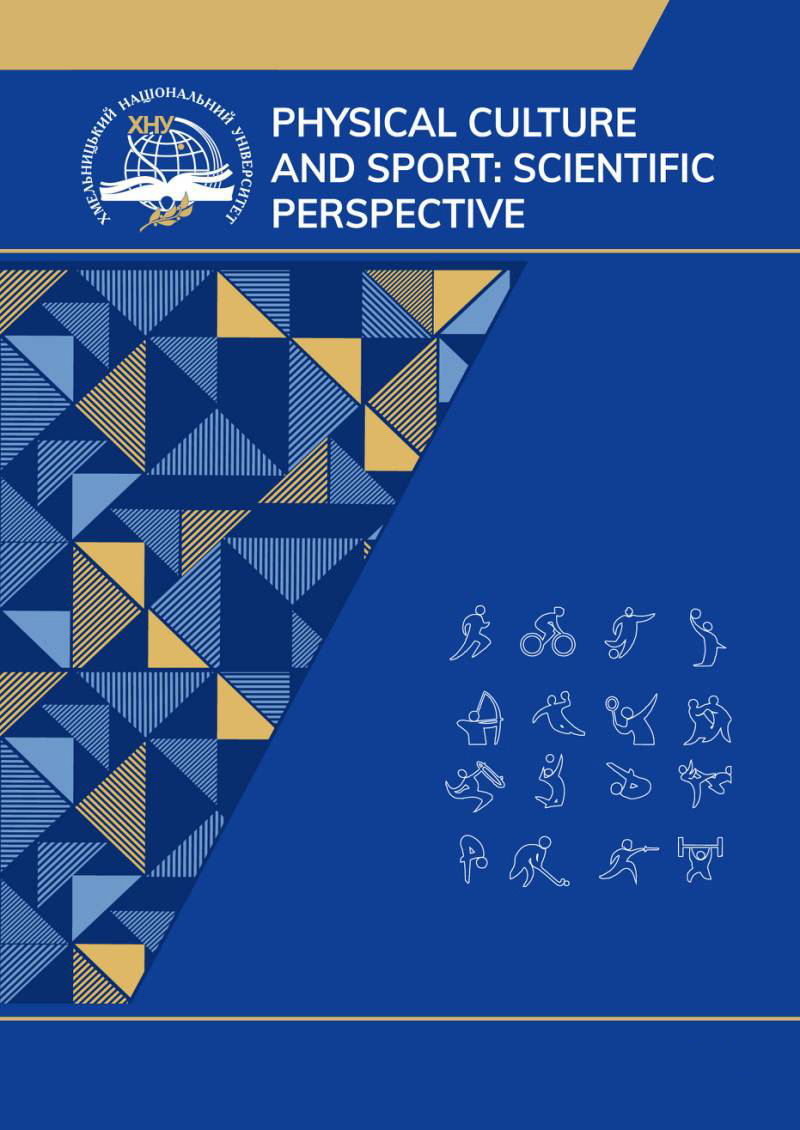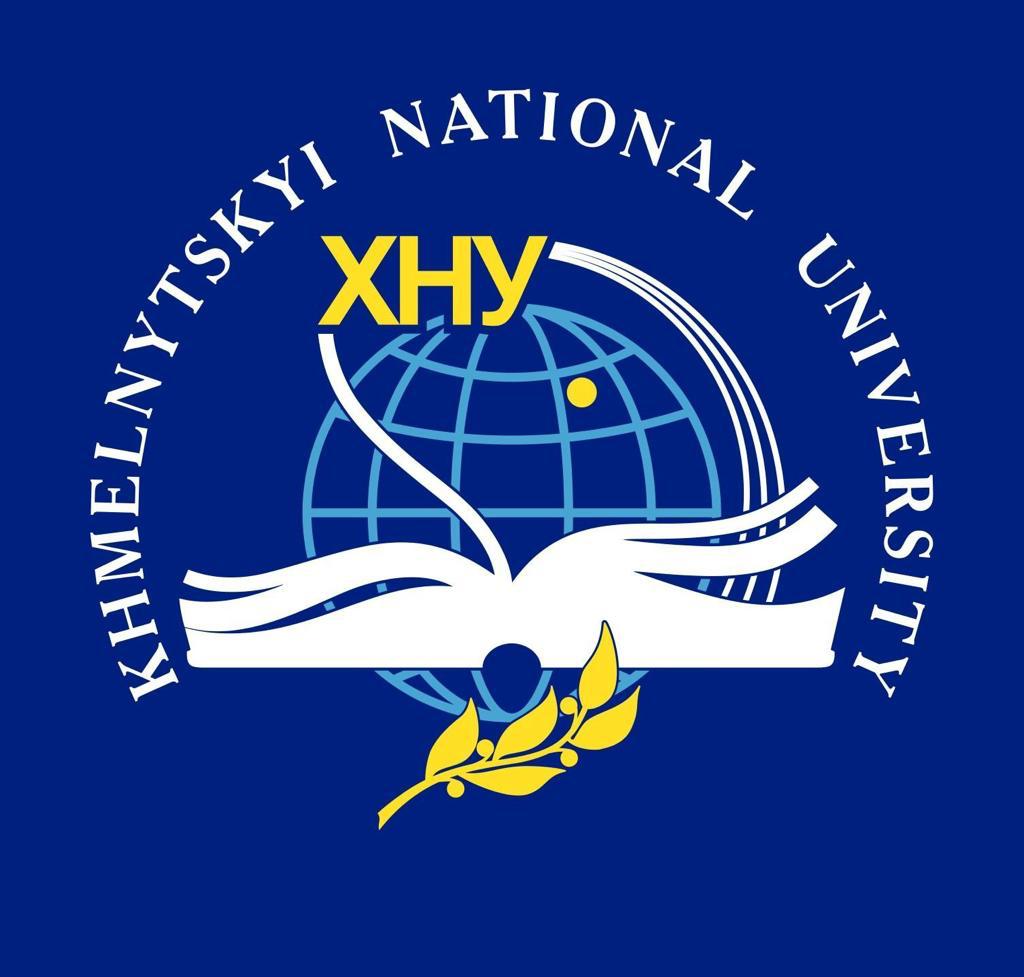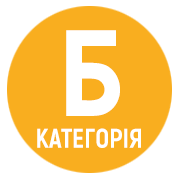SPECIFIC CHARACTERISTICS OF FUNCTIONAL SUPPORT IN COMPETITIVE ACTIVITY IN SPORT DANCE
DOI:
https://doi.org/10.31891/pcs.2024.4.16Keywords:
Sport dance, functional capabilities, specific performance, physiological load tensionAbstract
Modern requirements for the implementation of competitive activities involve the formation of certain functional structures that ensure a high level of performance and the conditions for demonstrating the specific skills of athlete-dancers. During competitive activities, indicators such as oxygen consumption, carbon dioxide release, and pulmonary ventilation change according to the requirements of the components of functional support for specific performance. Specifically: Rapid kinetics: T50 (VO2, CO2, VE): partners – 28.9±2.9; 28.9±2.9; 26.5±3.2 & partners – 29.3±4.3; 27.6±4.0; 28.0±4.3. Steady state (SF – semifinal): VO2 max, VE/CO2, La VO2 max (recovery period SF – F); partners: 52.8±2.1 ml·min⁻¹·kg⁻¹; 38.7±0.8 units; 9.9±0.8 mmol·l⁻¹ & partners: 47.9±2.1 ml·min⁻¹·kg⁻¹; 29.3±0.8 units; 8.9±0.3 mmol·l⁻¹. Sustainable function development under fatigue compensation (F – final): VO2 max F, VE/CO2, La max (recovery period F); partners: 53.8±2.8 ml·min⁻¹·kg⁻¹; 39.7±1.2 units; 13.4±1.2 mmol·l⁻¹ & partners: 49.0±2.3 ml·min⁻¹·kg⁻¹; 32.9±0.9 units; 11.8±0.4 mmol·l⁻¹. Structural differences in the functional support of specific performance were identified between male and female dancers. Male dancers exhibit a balanced type of aerobic and anaerobic energy supply. Female dancers’ functional capabilities are characterized by a predominant influence of anaerobic glycolysis and respiratory compensation of metabolic acidosis. Ways to improve the functional preparedness of athlete-dancers were outlined. The first involves enhancing strength preparedness as a structural component of functional capabilities. The second focuses on optimizing the parameters of physiological load and recovery responses. These factors are a promising direction of research in sports - sports dancing.
References
Artemyeva H. P. Skorostno-silovaya vynoslivost tantsorov akrobaticheskogo rok-n-rolla: puti resheniya problemy. Teoriya ta metodyka fizychnoho vykhovannya. 2009. 10. P. 15–18.
Dyachenko A., Huang Di. Neyrogumoralni stymuly stiykosti funktsionalnoho zabezpechennya spetsialnoyi robotnozdatnosti sportsmeniv u sportyvnykh tantsyakh. Teoriya i metodyka fizychnoho vykhovannya i sportu. 2022. No. 3. P. 20–26.
Platonov V. M. Suchasna systema sportyvnoho trenuvannya. Persha drukarnya, 2020. 704 p.
Soronovych I., Mu Ch., Dyachenko A., Khomyachenko O. Modelni kharakterystyky shvydkoyi kinetyky reaktsiyi kardiorespiratornoyi systemy sportsmeniv-tantsyurystiv. Teoriya i metodyka fizychnoho vykhovannya i sportu. 2021. No. 1. P. 67–74.
Khomyachenko O., Soronovych I. Teoretyko-metodychne obgruntuvannya konversiyi funktsionalnoyi pidhotovlenosti sportsmeniv u sportyvnykh tantsyakh. Teoriya i metodyka fizychnoho vykhovannya i sportu. 2022. No. 2. P. 37–43.
Bompa T. O., Buzzichelli C. Periodization: Theory and Methodology of Training. Sixth ed. Champaign IL : Human Kinetics, 2018. 392 p.
Chavarrias M., Villafaina S.., Lavín-Pérez A. M., Carlos-Vivas J., Merellano-Navarro E., Pérez-Gómez J. Zumba®, Fat Mass and Maximum Oxygen Consumption: A Systematic Review and Meta-Analysis. Int J Environ Res Public Health. 2020. 25. 18(1). 105. doi: 10.3390/ijerph18010105.
Chen J., Zhou D., Gong D., Wu S. A study on the impact of systematic desensitization training on competitive anxiety among Latin dance athletes. Front Psychol. 2024. 9;15:1371501. doi: 10.3389/fpsyg.2024.1371501. PMID: 38655213; PMCID: PMC11037396.
Diachenko A., Guo P., et al. Neurohumoral Components of Rapid Reaction Kinetics of the Cardio-Respiratory System of Kayakers. Sport Mont. 2021. № 19(S2). P. 29–33. DOI 10.26773/smj.210906
Kiliç M, Nalbant SS. The effect of latin dance on dynamic balance. Gait Posture. 2022. 92. 264-270. doi: 10.1016/j.gaitpost.2021.11.037.
Mu C., Soronovych I., Diachenko A., et al. The Characteristics of Physical Fitness Related to Athletic Performance of Male and Female Sport Dancers. Sport Mont. 2021. № 19(S2). P. 125–130. DOI: 10.26773/smj.210921
Podrihalo O., Xiaohong G., Mulyk V., Podrigalo L., Galashko M., Sokol K., Jagiello W. Priority scientific areas in sports dances research: the analysis of the scientific resources of Web of Science Core Collection. Physical Education of Students. 2022. 26(5). 207–23
Wanke E. M., Mörl-Kreitschmann M., Holzgreve F., Groneberg D., Ohlendorf D. Upper body posture in Latin American dancers: a quantitative cross-sectional study comparing different postures. BMC Sports Sci Med Rehabil. 2023. 25;15(1):66. doi: 10.1186/s13102-023-00672-w.
Wyon M., Allard G. Periodization: A Framework for Dance Training. Bloomsbury Publishing Plc; 2022.
Downloads
Published
How to Cite
Issue
Section
License
Copyright (c) 2024 Андрій ДЯЧЕНКО , Ігор СОРОНОВИЧ

This work is licensed under a Creative Commons Attribution 4.0 International License.





